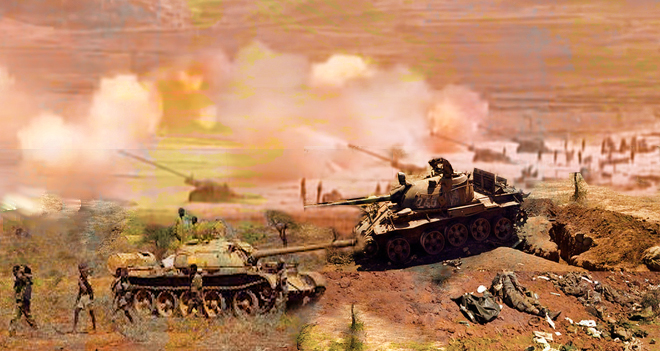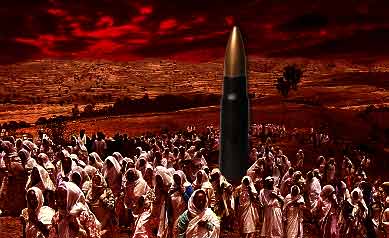Tension in the Eritrean Ethiopian Border

(Reading time: 5 minutes)
Gedab News learned that, over the last two weeks, large contingents of [Eritrean and Tigrayan] forces and equipment were amassed around the Ethiopian-Eritrean border areas.
For the last few weeks, both forces have been undergoing serious training and “a confrontation is very likely”, and if a confrontation ignites between the two sides, “the devastation will be unimaginable.”
The two forces have been stationed on the area since the 1998-2000 war but now Ethiopia has many armed forces that the federal government doesn’t control. One such force is the Tigray Defense Forces under the command of the regional government of Tigray in North Ethiopia.
Ethiopia has been going through fierce infighting in many parts of the country, including a major war between the joint forces of the federal government in collaboration of the Amhara regional forces and the support of Eritrea.
Eritrea maintains a heavy presence in the Afar and Amhara regions adjacent to the Tigray region.
In 2003, the International Court ruled over the disputed areas, but the rule was never implemented.
The Ethiopian government has not vacated the area insisting the two sides negotiate on some issues to ameliorate the impact of the communities that could be displaced and refused to relinquish territories ruled for Eritrea. At the same time, Eritrea maintained that the court ruling must be implemented without any conditions and immediately.
For the last two decades, the two countries failed to break the deadlock and the status quo continued despite the 2018 “peace agreement” Abiy Ahmed signed with Isaias Afwerki. And in 2019, the current Ethiopian civil war that erupted and Eritrea is engaged in.
The Eritrean army has tightened its control of parts of the border areas around Erob and Zalambessa, including the Northern Tigray town of Rama, halfway on the road between Adi Kuala and Adua.
Last week saw a heightened mobilization of Eritrean and Ethiopian forces around the areas that the two countries fought between 1998-2000 and lost over 100,000 lives. In addition, hundreds of thousands of civilians were displaced and exposed to living as refugees, mainly in Eastern Sudan. However, the people of the region are still suffering the consequences. A citizen of the region said, we are still living in anxiety and grieving over the loss of lives, properties, and opportunities.”
According to our sources, Tigray is suffocating due to total blockade laid on it. So far, international aid agencies have not gained significant access to provide food and medicine to the people of Tigray. To date, only a few dozen truckloads of aid were allowed to enter the region.
The prevailing precarious humanitarian situation in Tigray has brought about much pressure on the Tigray government and the military commanders “to act decisively to break the blockade because the humanitarian crisis has reached unbearable catastrophic proportions.”
If the one-month truce between the federal Ethiopian and Tigrayan forces expire in a few weeks without resulting in a sustainable agreement, there is no known restraint that will sustain the ceasefire lull. In the absence of a restraint, “the border area will certainly be subjected to more tragic consequences.”
Meanwhile, the Ethiopian army is carrying out a campaign against Oromo nationalists in many regions and the Battles has extended to the Kenyan and South Sudanese borders.
edited: In the first paragraph, [Eritrean and Tigrayan] added




Awate Forum